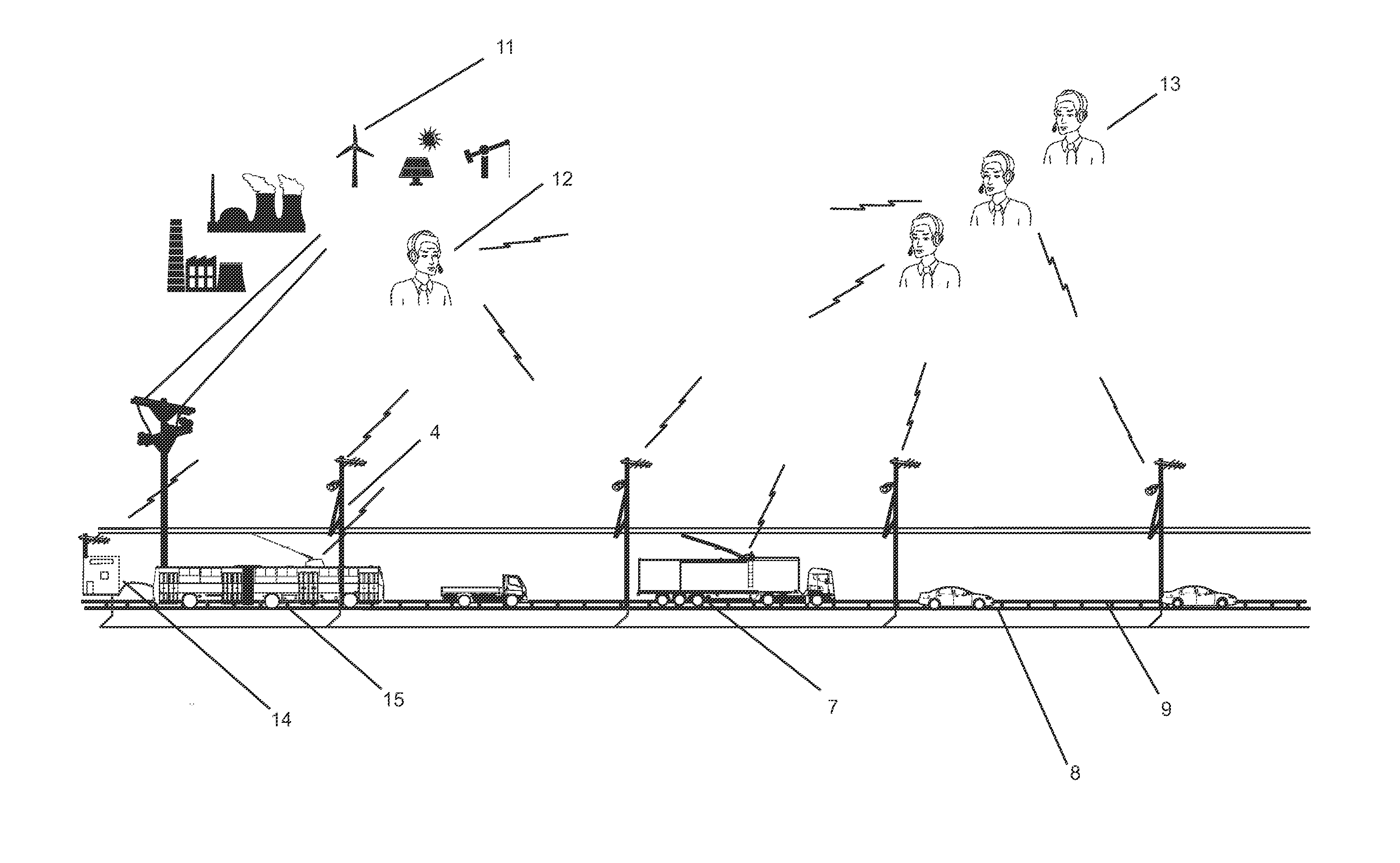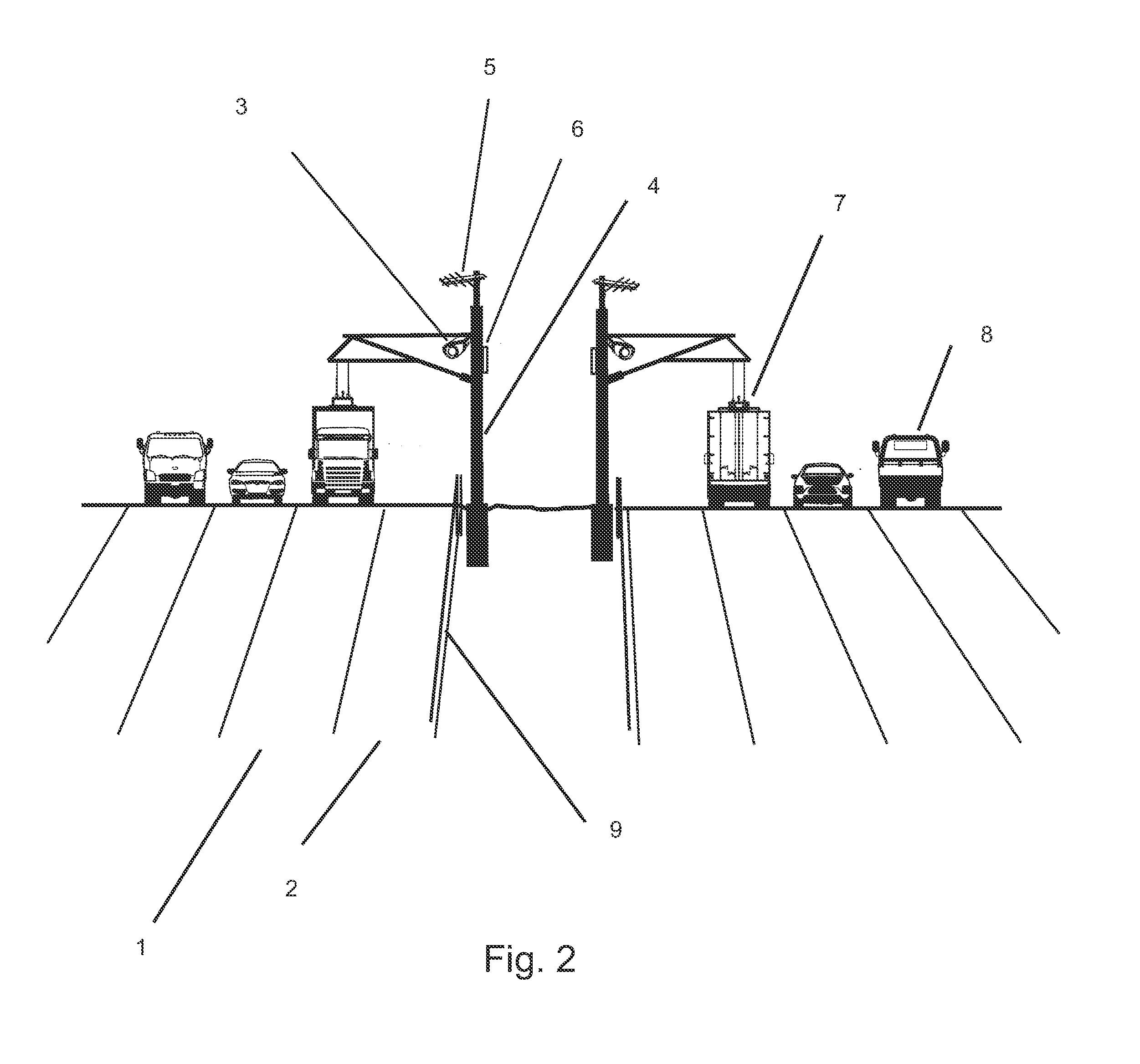Minimalist approach to roadway electrification
a technology of electrification and roadways, applied in the direction of electric devices, batteries/cells, instruments, etc., to achieve the effects of reducing the potential for electrical damage, improving operations and roadway safety, and ensuring financial return and orderliness
- Summary
- Abstract
- Description
- Claims
- Application Information
AI Technical Summary
Benefits of technology
Problems solved by technology
Method used
Image
Examples
Embodiment Construction
[0043]OCS electrical components are already well established and available for electric trolley bus and rail systems throughout the world. An object of this invention is to not reinvent OCS componentry rather to embrace it and its proven performance whenever possible in the first generation of this invention. Energy would then be sold for propulsion to licensed drivers of large hybrid diesel-electric combination trucks initially (see FIGS. 3, 4, and 5). These hybrid vehicles would incorporate an improved multi-axis energy collector with robotic control and vision sensing—a component of the present invention. This robotic collector module 51 would also have digital communications capabilities similar to a mobile cell phone or wireless internet appliance for identification, billing, and energy management. The envisioned seller of electrical energy and the robotic collector module 51 would likely, but not necessarily, be the local electric utility company 11 that currently exists as th...
PUM
 Login to View More
Login to View More Abstract
Description
Claims
Application Information
 Login to View More
Login to View More - R&D
- Intellectual Property
- Life Sciences
- Materials
- Tech Scout
- Unparalleled Data Quality
- Higher Quality Content
- 60% Fewer Hallucinations
Browse by: Latest US Patents, China's latest patents, Technical Efficacy Thesaurus, Application Domain, Technology Topic, Popular Technical Reports.
© 2025 PatSnap. All rights reserved.Legal|Privacy policy|Modern Slavery Act Transparency Statement|Sitemap|About US| Contact US: help@patsnap.com



